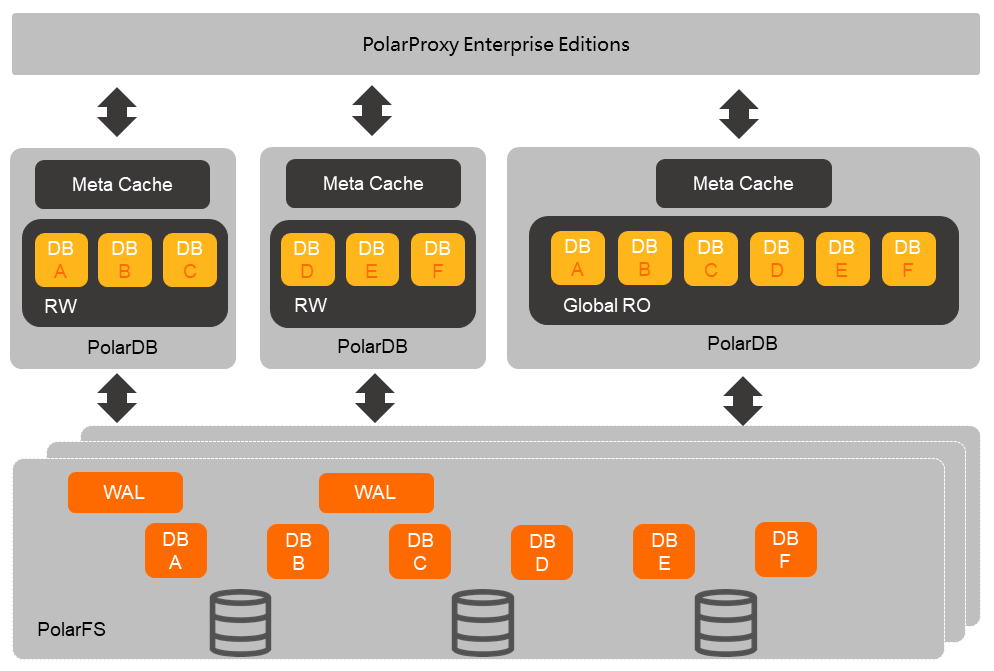As your workloads continue to grow, you may increase the number of primary nodes in your multi-master cluster. In this case, a global read-only node can be helpful as it can read data from all primary nodes to facilitate the handling of cross-database requests. This topic describes the architecture and core advantages of the global read-only node of a Multi-master Cluster (Database/Table) Edition cluster.
Architecture

All data files in a multi-master cluster are stored in PolarStore and made accessible to the global read-only node through the distributed file system, PolarFileSystem. You can connect to the global read-only node through the global read-only endpoint. It takes advantage of the read/write splitting feature of PolarProxy to automatically identify SQL statements that involve multiple nodes and read data from the involved nodes.
Core advantages
Reduced costs
Previously, you had to purchase a separate PolarDB for MySQL cluster to store data on the primary nodes of your existing cluster in one place and process cross-database requests. In addition, you had to purchase multiple Data Transmission Service (DTS) synchronization links to synchronize data from the primary nodes to the new cluster.
With the global read-only node feature, you only need to add a global read-only node to your existing Multi-master Cluster (Database/Table) Edition cluster to process cross-database requests. Because the global read-only node can access the data on the primary nodes of the existing cluster through PolarStore, neither an additional cluster nor any DTS synchronization link is required.
Low latency
While it generally takes seconds to synchronize data through DTS, the latency of the global read-only data is only tens of milliseconds. This greatly improves the timeliness of cross-database queries.
Supported version
This feature is supported for a multi-master cluster that runs MySQL 8.0.1.
Billing
You are charged only for the compute node. For more information, see Billing rules of pay-as-you-go compute nodes and Billing rules of subscription compute nodes.
Usage
Add a global read-only node
Adding a global read-only node in a multi-master cluster is the same as adding a common read-only node in other types of cluster. For more information, see Add a read-only node.
Query data across databases
A global read-only node can directly access data on all primary nodes, and thus can handle cross-database queries. Here is a sample cross-database query: select * from db1.tbl1 t1, db2.tbl2 t2 where t1.id=t2.id;. You can adjust the node configurations according to your business needs. For more information, see Manually change the specifications of a cluster.
Remove a global read-only node
You can remove a global read-only node that is no longer needed. For more information, see Remove a read-only node.
The global read-only endpoint will be deleted along with the removal of the global read-only node. You will not be able to query data across nodes through the cluster endpoint. Remember to reconnect through the cluster endpoint to primary nodes to ensure service continuity.
Add a global read-only column store node
You can add a global read-only column store node after you change the value of the loose_polar_enable_imci_with_mm parameter to ON. For more information about the parameter, see Parameter Configuration. For more information about how to add a read-only column store node, see Add a read-only column store node.